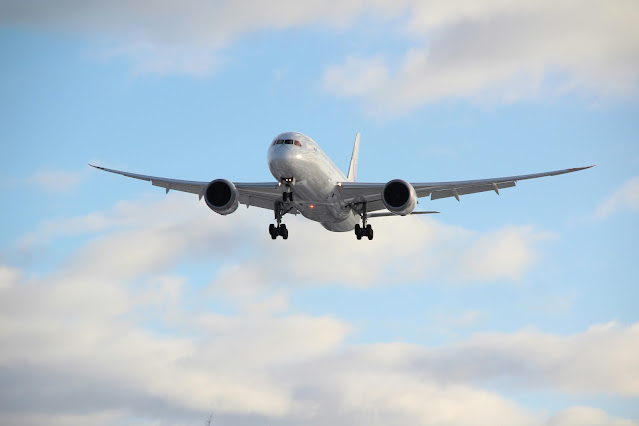Are Boeing Aircraft Safe? A Deep Dive into the Dreamliner & 737 MAX Incidents
Recent news of an Indian passenger plane crash has heightened concerns about aviation safety. The fact that the crashed aircraft was a Boeing 787-8 Dreamliner, the latest model from Boeing, has brought the issue of Boeing's safety back into the spotlight. So, are Boeing aircraft truly safe? This article will delve into the Indian passenger plane crash, examine the problems with the Boeing 787 Dreamliner and the Boeing 737 MAX (which caused two major accidents in the past), and explore how changes in Boeing's management philosophy have affected aircraft quality.
The Latest Accident: What Kind of Plane is the Boeing 787 Dreamliner?
The recent crash at Ahmedabad Airport in India occurred less than a minute after takeoff. Tragically, most of the passengers and students in a nearby medical dormitory died in the accident. The aircraft involved was a Boeing 787-8 Dreamliner, which began operations in 2011.
The Dreamliner is a flagship long-haul model for Boeing, with over 1,175 units operated by more than 70 airlines. It comes in three types: 787-8, 787-9, and 787-10, all sharing identical specifications except for length. Experts point to a problem with the lift mechanism as the cause, given the absence of an external explosion and the crash occurring immediately after takeoff. This incident marks the first crash for the Dreamliner, making its impact potentially significant.
Boeing 737 MAX: Will the Past Nightmare Repeat Itself?
News of the Dreamliner accident has reminded many of the consecutive crashes of the Boeing 737 MAX. In 2018 in Indonesia and 2019 in Ethiopia, 737 MAX aircraft crashed consecutively during takeoff, resulting in the tragic deaths of all on board. Both accidents were attributed to a software defect in the Maneuvering Characteristics Augmentation System (MCAS). This system's faulty sensor would incorrectly determine a high angle of attack during takeoff and forcibly push the aircraft's nose down.
The Boeing 737 MAX is the latest model in the 737 series, which began operations in 1968 and is the world's best-selling jetliner. It has undergone four generations of upgrades: Original, Classic, NG (New Generation), and MAX. The MAX models were particularly popular with low-cost airlines due to their over 1,000 km longer range and nearly 15% better fuel efficiency compared to the older 737 NG. In South Korea, several airlines, including Korean Air and Jeju Air, have contracts to introduce the 737 MAX, with 14 already in operation.
After the two major accidents, the 737 MAX was grounded worldwide. Operations resumed in November 2020 after software updates and revisions to the pilot flight manual. However, recent discoveries of improper pressure bulkhead assembly during the production phase continue to raise questions about quality control. The pressure bulkhead is a critical structural component that regulates cabin pressure, and improper assembly could lead to cracks in the fuselage during flight, potentially causing a catastrophic accident.
Boeing's 'Changed' Development Philosophy and the Shadow of Cost Cutting
The recurring quality issues with Boeing aircraft are often attributed to changes in Boeing's development philosophy and its focus on cost cutting. In the past, Boeing adhered to a method where it directly manufactured the fuselage and wings, outsourcing only a few components. However, with the Boeing 787 Dreamliner, Boeing for the first time adopted a method of entrusting major components, from design to production and verification, to external suppliers. This process led to component quality issues, causing a three-year delay in delivery and an increase in development costs from an estimated $10 billion to $40 billion.
To recover these losses, Boeing resorted to reducing labor costs, including laying off experienced, highly paid employees. Experts suggest that these workforce reductions negatively impacted the development of the 737 MAX. Quality control gaps emerged as inexperienced personnel were deployed to production lines without proper training.
Interestingly, there's a significant difference in philosophy between Boeing and Airbus. Boeing's philosophy is "the pilot always has final authority over the aircraft," meaning the aircraft directly responds to pilot input. In contrast, Airbus operates under the philosophy that "humans are fallible," meaning the computer limits abnormal pilot inputs. This philosophical difference, whether to trust humans or computers, has a considerable impact on aircraft design.
Safety is a Non-Negotiable Value
The recent Boeing 787 Dreamliner crash in India and the past consecutive accidents of the Boeing 737 MAX once again highlight the critical importance of aviation safety. It's clear that a new aircraft isn't necessarily a safe one. Boeing's decision to cut experienced staff and change production methods to save costs should be re-evaluated.
Safety is an absolute, non-negotiable value. Airlines, as well as aircraft manufacturers like Boeing, must prioritize passenger lives above all else and strive to ensure safety under all circumstances. Going forward, when we board a plane, it will be essential to go beyond simply checking if it's the latest model and instead carefully consider the aircraft's safety record and the airline's maintenance ethos.


댓글 없음:
댓글 쓰기